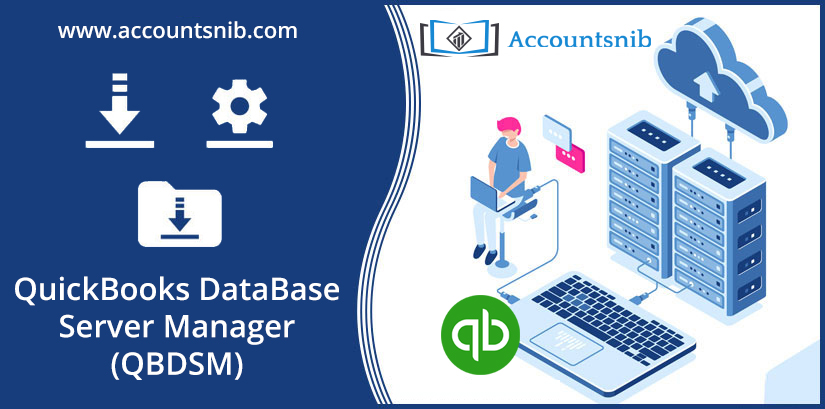QuickBooks Database Server Manager is an extremely useful tool started by Intuit. It should be installed and set up on your system where QuickBooks company files are stored for the best file performance on the network. If you want to learn how to install, update, and install the QuickBooks Database Server Manager, you can read this blog post. We have created that to find out that you need to use QuickBooks Database Server Manager (QBDSM) successfully. In this blog post, we have described the best steps to install, setup, and use the QuickBooks Database Server Manager.
QuickBooks Database Server Manager Usage
- The device is responsible for creating network data files (.ND) for any QuickBooks company files located on the host computer. If you are using multiple versions of the QB desktop, it is necessary to install the Database Server Manager for each version.
- Installing multiple versions of QBDSM will give you many processes (but not more than one version of QB software).
- If you are working on multiple versions of QuickBooks Desktop, it is mandatory for you to install the Database Server Manager for each version in chronological order (from old to latest).
- Loading the database server manager of every year ensures that the year database service runs continuously in the background. These services are mentioned in the Windows service interface as QuickBooksDB Server manager has a version number, for example, 28 for QuickBooks 2018 and 29 for QuickBooks 2019.
- The installed QBDSM adds one user for each QuickBooks software version.
Steps to install QuickBooks Database Server Manager
See the information below to understand the steps to install the QuickBooks Database Server Manager.
- First of all, you have to double-click QuickBooks Installer to install the installation wizard.
- Then select Next if the system has an internet connection and the update can be downloaded. If there is no Internet connectivity, select No and then Next.
- Close all other open programs and select Next.
- Read Software License Agreement Terms and select I accept the terms in the license agreement if you agree and then select the Next option.
- Now select the Custom or Network option.
- Choose one of the two installation types:
- If you plan to run a QB program on this computer, select Use QB on this computer and consider storage.
- Select You will not use QuickBooks on this computer if you will use this computer only to store QuickBooks data.
- Select Yes, allow Access.
- Type License Number and Product Number.
- Follow the prompts to complete the installation.
- Finally, after the installation is complete, you must install the Database Server Manager.
Steps to update QuickBooks Database Server Manager
- It is recommended to update the Database Server Manager from time to time. In general, it is mandatory when a new year or QuickBooks desktop critical update is released on a computer.
- For the latest release go to UpdateBookbook Desktop and Download Patch.
- Reboot the server after the patch installation is complete.
- After the server is updated, you may receive the following message on your computer screen: The company file needs to be updated to work with this version of QuickBooks Desktop.
- You will be prompted to create a backup as these updates can alter, modify, or modify the database structure.
- Follow the onscreen instructions and after the backup is complete, you should be able to open the QuickBooks company file.
Steps to set-up and use QuickBooks Database Server Manager
You can scan folders for company files configured for multi-user access. The QuickBooks Database Server Manager tool can be used to screen local hard drives so that new QB company files can be automatically configured.
Configure database services
- First, go to Start and search for Services.
- After that select services and then search for QuickbooksDB Server manager.
- Double-click to open the service.
- If it is started, select Stop Service.
- Now check the General tab, if the startup type is manual then change it to automatic.
- On the Log On tab, flip the radio button from this account to the local system account.
- Go to the Recovery tab and change the drop-down option to Restart-Service for first, second, and subsequent failures.
- Return to the General tab and start the service.
Open QuickBooks Database Server Manager
- Go to Start and choose the Program.
- Select QuickBooks and then select QuickBooks Database Server Manager.

